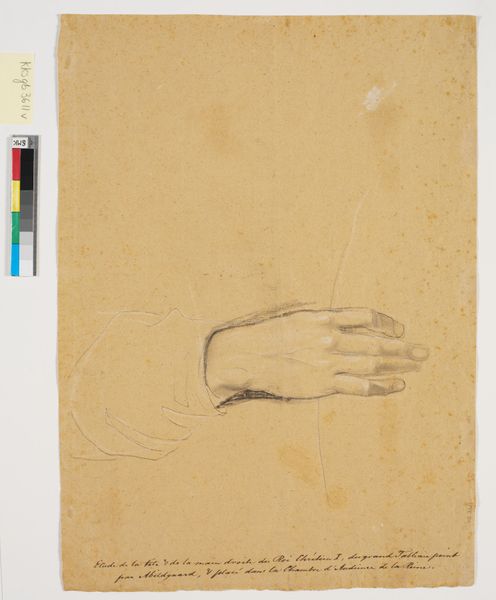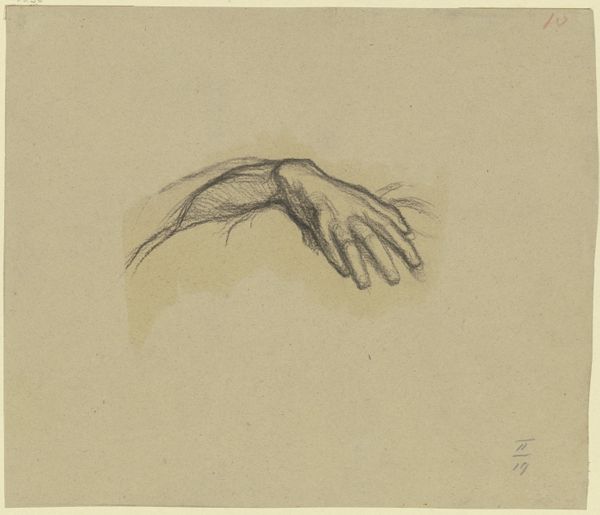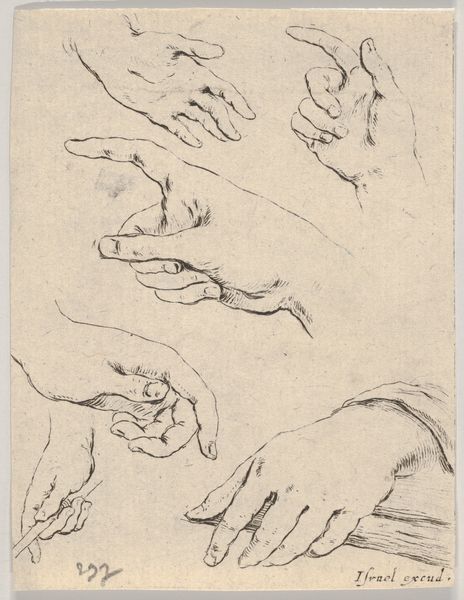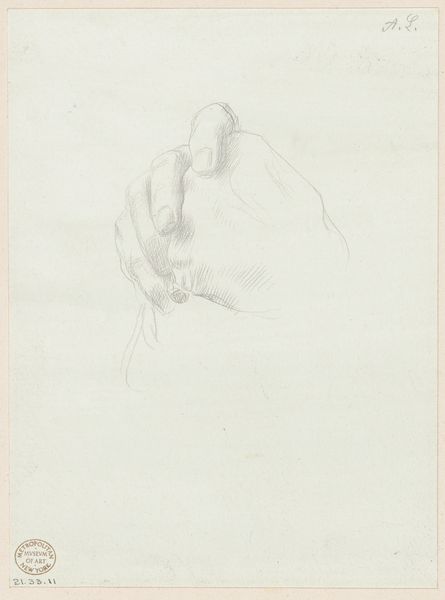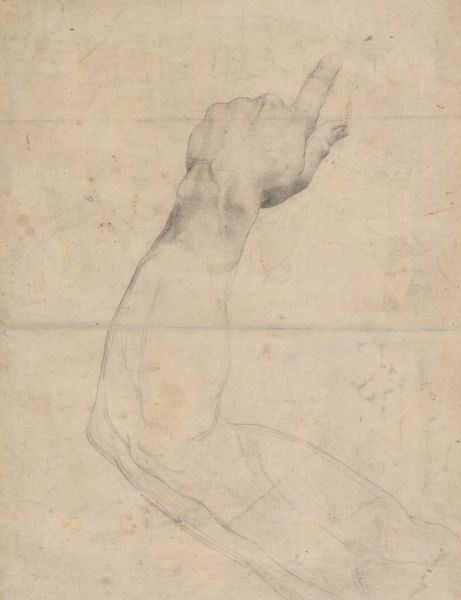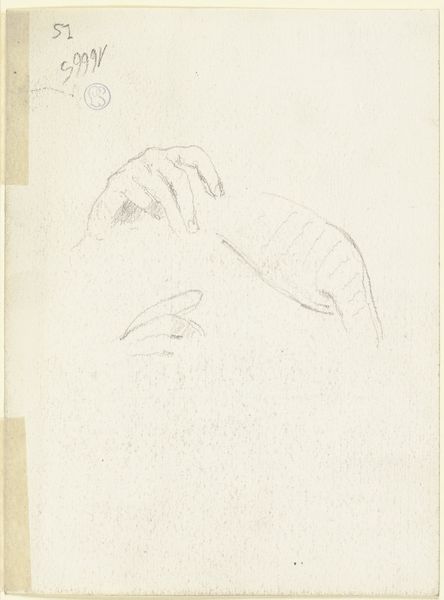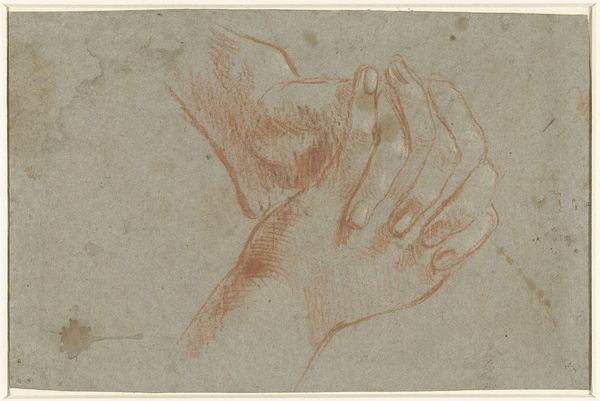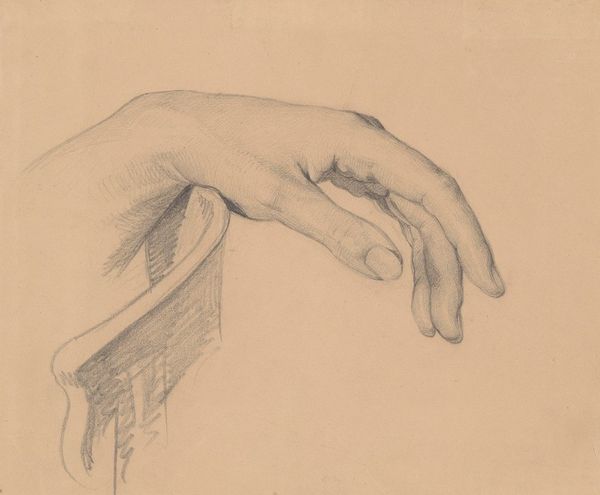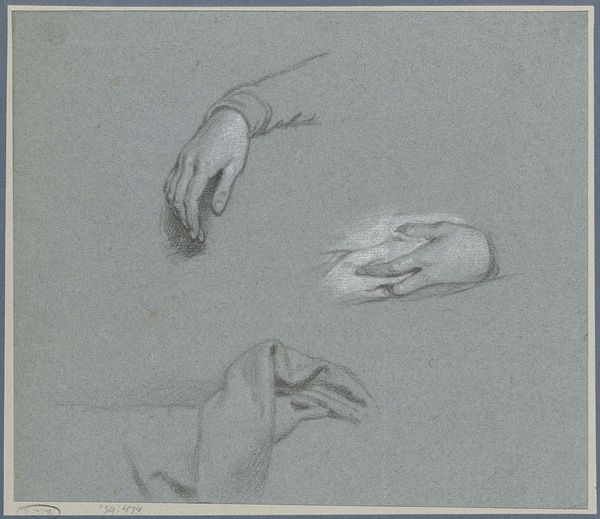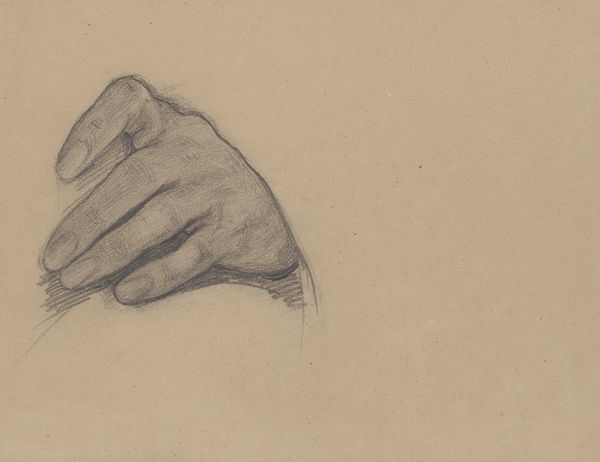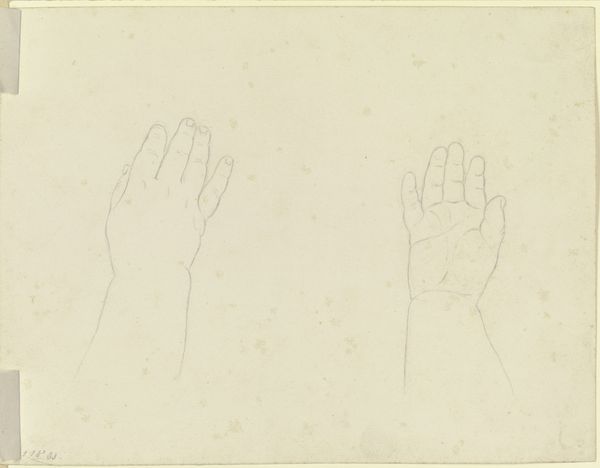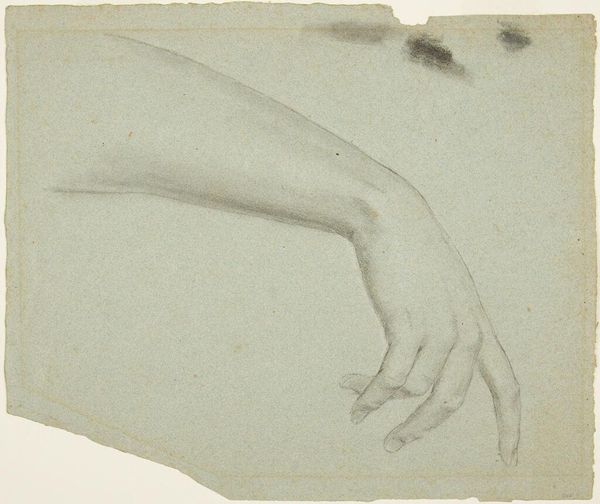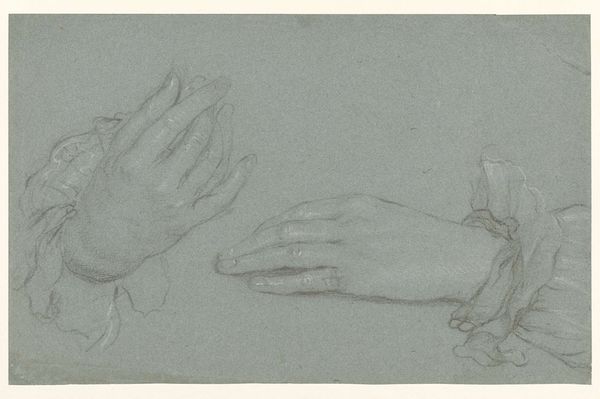
drawing, pencil
#
beige
#
portrait
#
drawing
#
aged paper
#
toned paper
#
neoclassicism
#
light coloured
#
figuration
#
form
#
personal sketchbook
#
spread layout sheet
#
light and airy
#
pencil
#
line
#
page layout
#
storyboard and sketchbook work
#
academic-art
#
soft colour palette
Dimensions: 160 mm (height) x 211 mm (width) (bladmaal)
Editor: This drawing, "Studie af en hånd," or "Study of a Hand," was created by Nicolai Abildgaard around 1778-1779. It’s a pencil drawing on toned paper. The delicate lines and the way the hand is posed gives it a feeling of precision. What stands out to you? Curator: What strikes me immediately is the artist's close attention to the materiality of representation. Abildgaard chose pencil and toned paper—commonplace materials. The hand, seemingly just a practice exercise, suggests an inquiry into the relationship between labor, the artist's hand, and the creation of meaning. Consider the cost of pigments versus pencils at the time. What statement do you think Abildgaard makes by opting for accessibility over lavishness? Editor: That's a great point! It really reframes how I saw this. The accessibility of the materials does give it a different weight. It feels less about portraying an idealized form, and more about...well, the work of creating form itself. Almost like documenting the process of learning. Curator: Precisely! The hand, a tool in itself, is represented with another tool: the pencil. How does this commentary on labor intersect with Neoclassical ideals of form and beauty for you? Is he upholding or challenging these ideas? Editor: That's something to think about. It feels almost like he's democratizing art-making in a way, taking the focus off the elite product and shining a light on the more commonplace process. The very idea of *study* foregrounds work in a compelling manner. Curator: Indeed! And perhaps questioning the boundaries between ‘high art’ and the materiality of its production. The labor is visible, isn't it? Editor: Absolutely. It's fascinating how the simple choice of materials and subject can tell a story about artistic production itself. I'll definitely look at drawings differently from now on! Curator: It's often in these seemingly simple exercises that artists reveal the complex interplay between materials, labor, and meaning. Thanks for sharing your perspective.
Comments
No comments
Be the first to comment and join the conversation on the ultimate creative platform.
